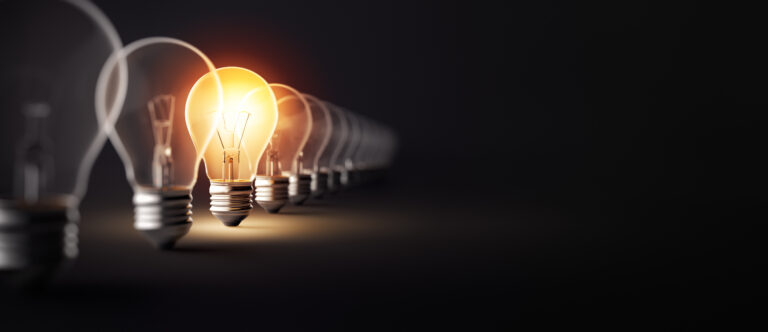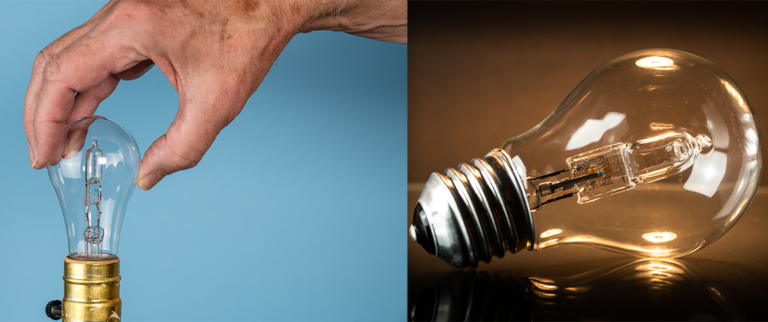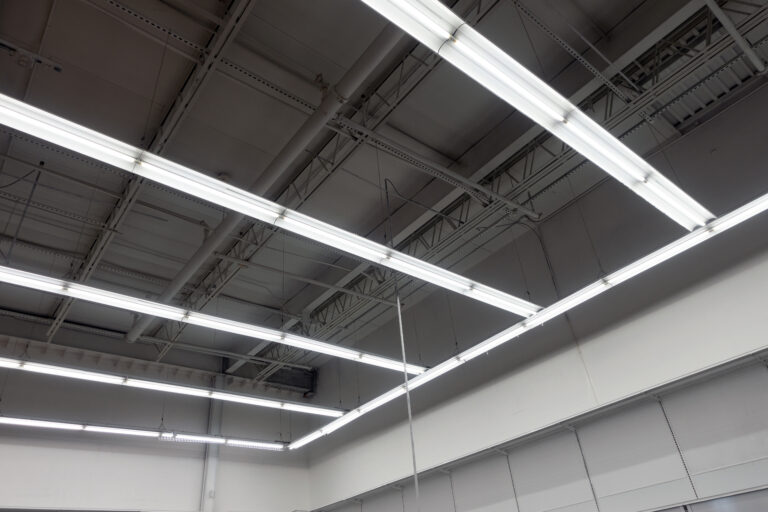
The Ultimate Light Bulb Guide
While we often rave about stylish fixtures and trendy shades, let’s not forget the real star of the show—the humble light bulb. The concept of lighting truly lies in these illuminating wonders.
Ready to brighten up your space with the right bulb for your light fixture? We will light up the way to find the perfect match for your indoor or outdoor lighting fixtures.
Incandescent Bulbs
The history of the filament light bulb dates back over a century, originating in 1879. These bulbs used a bamboo filament that could only burn for around 1,200 hours. These were later upgraded to a tungsten filament, which remains in use today. Thomas Edison was a key figure behind the development of the incandescent bulb, giving rise to the term ‘Edison bulb.’ In 1881, Lewis Latimer, a renowned inventor and engineer, improved the filaments by developing a more durable carbon compound.

The incandescent light is no longer the dominant choice of lighting in modern times. In August of 2023, manufacturing ceased its production, cementing the long history the Edison bulb has illuminated our society.
Halogen Lighting
Halogen bulb options are another common bulb type mostly seen in vehicle headlights, outdoor spotlights, work lighting, and food warming. These emit vast amounts of heat, but do offer a 20 to 30% energy saving over the incandescent option.

These bulbs typically cost more, but also last longer and get more lumens per watt compared to the incandescent type. Halogen bulbs also burn a filament, but also burn a few pressurized specialized gases.
Fluorescent Lighting
A non-filament type called the fluorescent light has been around since 1901. These lights will typically use argon gas that gets ignited by an electrical arc. Mercury in the gas will emit ultraviolet radiation which causes the coating of the lamp to glow.

Fluorescent lights can last up to 20 times longer and use as little as 20% of energy as the incandescent bulb. This makes this kind of light the choice of businesses that have large rooms since maintaining these lamps can be quite the chore.
LED Lights
Led lighting is the modern standard of lighting types. Some LEDs are even replacing many fluorescent lights due to their extreme efficiency and lumens per watt performance. LED lighting is not only more efficient than any other type, it’s also longer lasting.

These modern lights work by producing light when voltage is applied to charged semiconductors. These semiconductors are applied to a chemical chip which creates the LED assembly. Because of the inherent design of an LED chip, more lighting fixture types can be developed including LED strips, tape lights, decorative light bars, and specialized shapes.
Lumens
Lumens measures the total amount of light emitted by the bulb. The wattage measures the amount of power consumed by the bulb. The higher the wattage rating, the brighter lumen value. Keep in mind, the highest wattage you can use will be determined by fixtures wattage rating.
Color Temperature
Color temperature of a light is simply the hue of the light emission. The color of the hue can be caused by certain gasses with each chemical reaction outputting a certain color. Color temperature of a bulb is listed in Kelvin (k) and it can range from 1000k to 10,000k.

The lower end resembles candlelight, the mid range will emulate sunlight, with the higher end resembling near ultraviolet. Daylight is more centered around the white hue at 4300k and is best suited for task oriented spaces.
Common Myths
There is some common confusion on the color temperature of a light. White light at 4300k is not “brighter” than a light that looks yellow at 3000k. The color of the hue does not indicate the brightness or lumens of a bulb.
Bulb Styles/Shapes
Let’s move on to bulb shapes. These would include the standard or arbitrary bulbs, globe, tube, spiral, spotlight, and specialty lights also known as designer bulbs.

Each of these bulb shapes also have a standardized bulb code to help identify the shape and special features such as the reflector type. Below are some common light bulb shapes with their corresponding codes:
- A for arbitrary
- C for candle
- R for reflector
- MR for Multifaceted Reflector
- PAR for parabolic aluminized reflector
- G for globe
- T for tubular
Bulb Socket Types

Light bulb sockets also come in a variety of sizes. They are identified by light bulb base codes, with the letter denoting the shape of the base and the number displaying the size. The most common household bulb base is the E26 socket or the older style E12 which resembles a candle.
Keep in mind, with the recent move to LED only lighting, the LED light will still utilize the same E26 & E12 socket as shown to the left. This is great because this allows the legacy look of these stylish bulb shapes for time to come.
Conclusion
As you can see there are advantages and disadvantages to both bulb based and integrated LED light fixtures. Choosing the best option will depend on which situation best suits your needs. Contact us for more information on indoor and outdoor lighting and let us find the right light for you.

